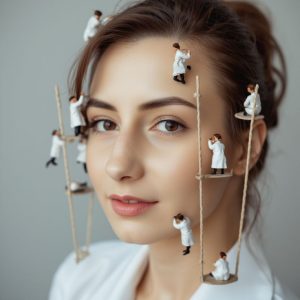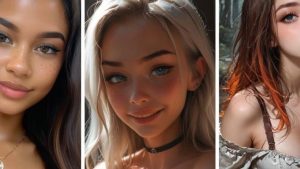Digging into the capabilities of uncensored AI picture generators
The phrase “uncensored ai photo generator“ already sends some photographers clutching their cameras a little tighter, and others imagining limitless possibilities in terms of pixels. AI-based creativity tools do exist–there is no doubt. They claim to deliver surreal landscapes, impossible portraits, and photographs that would make the Photoshop icons of yesteryear turn green. However, as always, with any rapid advancement, the advantage is accompanied by new conundrums, especially as more people detach the safety nets of virtuality and allow the motor engines of AI to run free.

Photo Generators: Opening the Creative Box AI
Until we unknit how these AIs tick. Rightfully used by most self-proclaimed non-restrictive AI image makers is a plethora of creative potential. They turn into fantastical realities within a few seconds of the application of plain thoughts. Or how about a portrait that has harkened back to the vintage glamour with a bit of dreamy cyberpunk touches? With the push of your key, the conglomeration of pixels occurs until your coffee is cold.
Such tools destroy the fences that restrain photographers within the boundaries of traditional editing. One of my friends told me how they had inserted the old vacation picture they used to have simple street in Rome. What came out was a street with floating lanterns and the Colosseum, which becomes a disco nightclub lit with neon lights. Sure, it seems preposterous, but such is the new illusion: you are never limited to what was in your lens that day.
Creativity isn’t all about impressing the social feeds. It helps artists to throw each of the rules in the air and pursue experiments. Illustrators, artists, and even amateurs are producing graphics that blast bygone borders of creative endeavour.
The Speedway To Active Expression
The filters are now optional in AI photo tools, and this can help creators move further away from the past of stock photography, which is always squeaky clean and corporate-friendly. It sounds somehow wild – and a little dangerous – to think that an AI can be our front seat passenger without its hands on the steering wheel.
Uncensored AI generators can pour out picturesque schemes, forbidden ideas, or images that conservative filters never would have passed. Do you want to see a city in ruins covered in vines, a spur-of-the-moment shot with a social commentary, or a landscape without a sense of place? The opportunities open up, almost beyond our possible realization at their vastness.
However, there is a twist: these tools, when left unregulated, tend to produce mutated, inappropriate, or highly shocking results. It is the conflict between the all-out spirit of creativity and the ethical minefields that speed bumps are now, as it is all leading to sizzling excitement and surprises in the field of AI-generated photography today.

Flashbulb Risks: Ethics in the Wild West
Take any uncensored AI photo generator, and you find yourself to be a pioneer of the wild west. The risks? They exist and should be the object of every shutterbug.
Now, how about that in practice?. Deactivating filters can also result in the AI generating images with sensitive or explicit material, or copying styles, faces, or even direct images without permission. Such generators have no information on what is right and what is wrong. They merely re-edit what they have consumed of the data oceans on the internet.
Examples like these: Some artists discovered their art being copied or stolen by AI, copy-pasted into new images without an acknowledgment or a credit. The boundaries between dedication, plagiarism, and just silly are difficult to see.
There is context. The strong image has the capacity to inspire reflections or to incite hatred- perhaps doing both at the same time. The absence of built-in judgment in AI initially leaves creators with enormous influence and also more responsibility than was previously possible.
Creative Goldmines: The Joy of Untouched Tools
To an artist in need of artistic revolution, barebones AI generators are like Christmas morning. Wish to combine graffiti and baroque? Easy. Wish you had a sombre portrait on Saturn’s moon, with a hint of Art Nouveau? No sweat. These tools will help to turbocharge what once took hours to minutes, and the results sometimes can be literally golden.
Consider narrative: With heavy visual processing enabled by camera-phone software and related programs, guys and girls are now able to depict events, emotions, and ideas that we humans could not and did not stage using real people and real scenery. In need of an image that balances existential dread, childhood nostalgia, and hope for the future all in one go? Type it in, move a couple of sliders, and you have a lens to an emotion that previously did not exist.
Creative agencies are also coming in on it. Production, once involving extensive props, sets, and casts (as well as a deep wallet), can now be executed digitally in a matter of minutes. Not only is the payoff speed. It is the ability to construct, sketch, and innovate at speed that would have had a traditional studio gnawing on its own fingernails.

Human Touch: The Lens we need
However, despite the great potential, these Artificial intelligence tools fall short. AI cannot view things through the eyes of a human being. Get to think of the mishap one user experienced: she requested a picture of a family as they appeared in a wonderful forest. What they received was seven fingers on each hand and the smile of the fever dream. However imaginative, imaginative freedom still needs a careful editor in all but the privacy of his or her own office.
The randomness of uncensored generators is more significant than ever, and human supervision is arriving more frequently than ever. Artists have to refilter, resequence, and at some point hit the off-switch when one or more of the visuals, itself, and has crossed the line into the inappropriate or bizarre. The AI is collaborative, and the results should be refined, and a layer of real-world sense should be applied in the new post-processing.
Just as there is a Da Vinci of the digital era, there is also a new lot of visual puzzles to figure out. The camera changed, but the eye of man remains fundamental. There is an open road in this new age, and to have imagination is important, but to have brakes. The opportunities are staggering, perilous, and all too threatening.
